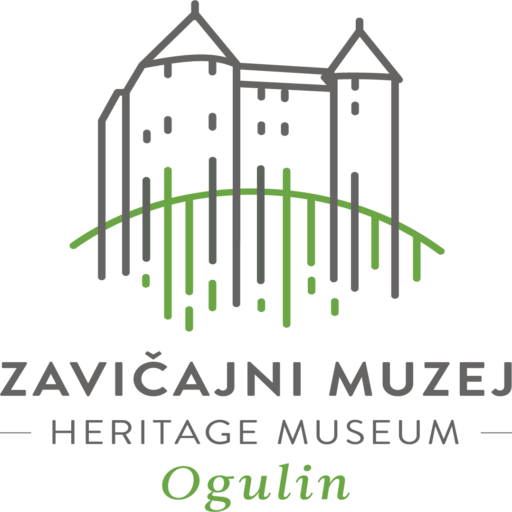OGRLICA OD JANTARA
Vrijeme nastanka: 9.st.p.n.e.
Nalazište: Trošmarija – Goričak, tumul, grob 1
Ogulinski prostor svoje dugovječne tragove života zahvaljuje prije svega svom geografskom položaju.U njegovoj neposrednoj blizini prolaze putovi koji su povezivali Panoniju preko Like s Jadranom, pa je intezivan protok ljudi i dobara pogodavao i naseljavanju čitavog kraja,o čemu svjedoče mnogobrojni arheološki nalazi.
Japodi, prastanovnici kapelskih prijevoja intezivno su trgovali i time dolazili u kontakt s drugim narodima. Ono po čemu su se posebno isticali je uporaba jantara. Jantar s obala Baltičkog mora nabavljali su od trgovaca iz susjednih područja. Jantar je fosilna smola drveća koje je živjelo prije milijun godina.
Najviše jantara potječe sa obale Baltičkog mora. Kroz vrijeme more je deralo obalu i oslobađalo jantar iz zemlje. Jantar je plutao na vodi, a ljudi su ga hvatali mrežama i trgovačkim karavanama (tzv. Jantarnim putem) prevozili na jug.
Japodi su razvili obradu bronce, jantara i stakla do zavidne razine. Iako se naslućuju sličnosti s okolnim narodima, njihova je umjetnost specifična i prepoznatljiva. Velike količine jantarnih predmeta svjedoče i o njihovu bogatstvu jer je bio skup. Od jantara su izrađivali brojne predmete, od ukrasa i privjesaka do kutijica za zaštitu od uroka. U brončanom dobu mnogi su narodi vjerovali u magičnu moć i ljekovitost dragocjene smole. U svojim su radionicama izrađivali ukrasne pločice, zrna, dugmad i privjeske u obliku životinja i ljudi.
/ENG/
AMBER NECKLACE
Time of origin: 9th century BC
Site: Trošmarija – Goričak, tumulus, grave 1
The Ogulin area owes its long-lived traces of life to its geographical location. In its immediate proximity, there are roads that connected Pannonia to the Adriatic through Lika, so the intense flow of people and goods favoured the settlement of the entire region, demonstrated by numerous archaeological discoveries.
The Japods, the original inhabitants of the Kapsel Passes, traded intensively and thus came into contact with other peoples. What they stood out for was the use of amber. Amber from the shores of the Baltic Sea was procured from merchants from neighbouring areas. Amber is the fossilized resin of trees that lived a million years ago.
Most amber comes from the coast of the Baltic Sea. Over time, the sea has eroded the coast and released amber from the earth. Amber floated on the water, and people caught it with nets and transported it to the south in trade caravans (the so-called Amber Road).
The Japodes developed the processing of bronze, amber and glass to an enviable level. Although similarities with the surrounding nations may be suggested, their art is specific and recognizable. Large quantities of amber objects demonstrate their wealth because it was expensive. They made numerous amber objects, from ornaments and pendants to boxes for protection against spells. In the Bronze Age, many nations believed in the magical power and healing properties of precious resin. In their workshops, they made decorative plates, grains, buttons and pendants in the shape of animals and people.



